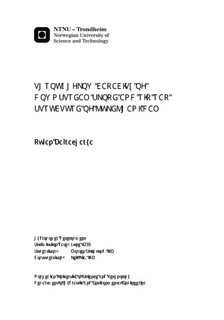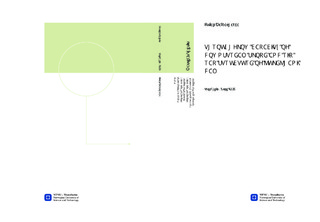| dc.description.abstract | Overtopping of the embankment dams has been the major cause of failure of the dams that has resulted much damages of the lives and property in the recent years. There are several accidental incidents of failure. As far as the extreme flood situations in Nepal, people have to fight with many disastrous and damages caused by flood. During such extreme scenario, the passage of such floods mainly relies upon the gate operation rule and the spillway operation rule. Many disastrous floods are unpredictable and no such planned procedures are applied due to the poor availability of the data and the forecasting systems. Due to these reasons, many damages occur regarding the loss of lives and damages of properties, infrastructures and sufferings till now. According to the Norwegian rules and codes, the dams must be designed for the 1000 years of flood. Besides that, the dam should also be able to resist the probable maximum flood without any failure. Considering these criteria, the thesis is most focused with the throughflow capacity of the existing dam in Nepal. The existing dam project named Kulekhani is only the high rockfill dam of Nepal. The dam is checked against the overtopping in the probable maximum flood condition and found to be safe under these criteria. But when the gates of spillway are closed, the overtopping is occurred. The overtopping condition is tested by carrying out various lab tests in the flume of NTNU and the drainage capacity of Kulekhani dam is thus determined.From the test results, the existing condition of Kulekhani with the random riprap placement is not able to withstand the vulnerable condition of overtopping. Thus, the dam needs to be reinforced with the riprap with the proper orientation. The design and the sizing of the rip rap are done with the available methods used. The methods are available from various literature and the practices existing so far. From the designed sizing, the mean diameter of the rock size is obtained. For the orientation of the designed rip rap, the various orientations are checked to get the good performance of the riprap. The orientation mainly means the angle of the longest axis of the rip rap with the downstream slope of the dam. The test results show that the discharge that the dam can take before failure, i.e. failure unit discharge varies remarkably with the change in the orientation. The various lab test results are compared and the best orientation is chosen and proposed for the Kulekhani dam. Then dam is test against the overtopping with this proposed orientation and designed size by conducting the various similar tests in the lab. In addition, the strength of the rip rap is also checked. Eventually from the test results, it is observed that with this orientation and placement, it will able to resist the discharge about twelve times than the existing failure unit discharge for the dam. Thus the current placement of the rip rap in the Kulekhani should be replaced with the proper orientation in order to be safe against the condition of overtopping under any circumstances. Similarly the various parameters influencing the performance of the rip rap is studied.The results show that the drainage capacity of the dam is greatly affected by the orientation and the use of the bigger stones. The capacity is improved when the angle of the riprap is greater with the dam slope. The coefficient of the uniformity and the angle of repose of the rip rap are the also interesting parameters observed that affects the test results. The packing factor which is mentioned in the Oliver as one of the important factor to affect the threshold is also studied. It shows that the packing factor doesn?t have direct influence in test results. On the other hand, the numerical simulation is also performed by using the open source C++ programming language course called Kratos. Two models are used for the simulation one with the whole geometry and one with the rockfill only. It shows that the flow cannot be exactly pictured in the modeling of the whole dam. However the model with the rockfill only shows some realistic condition of the rockfill in the dam. It is necessary to do detail studies on both the numerical models and the physical models to give the true pictures of the throughflow capacity of the dam. | nb_NO |

